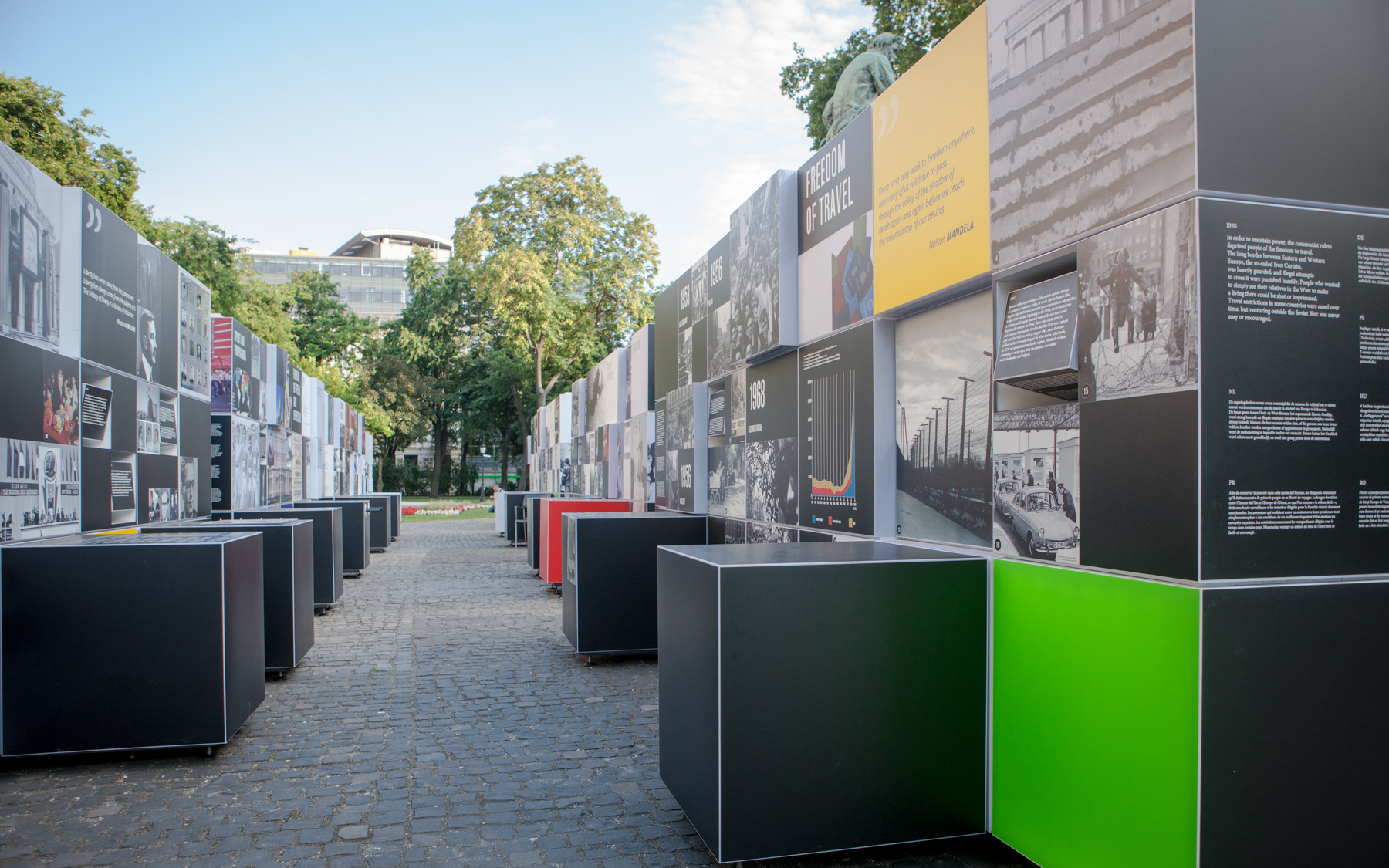30 June - 8 August 2015, National Museum in Budapest
Starting from 30 June until 8 August on the premises of National Museum in Budapest (Muzeumkert) a unique outdoor exhibition entitled ‘Roads to 1989. East-Central Europe 1939-1989’ is presented.
The exhibition “Freedom Express. Roads to 1989. East-Central Europe 1939-1989” was officially opened in Budapest in front of the National Museum on 2 July by Zoltán Balog, Hungarian Minister of Human Resources, together with dr László Csorba, director of the Hungarian National Museum, dr Iván Bába, the Hungarian coordinator of the European Network Remembrance and Solidarity, Lieselore Cyrus, Ambassador of the German Federal Republic in Hungary and Roman Kowalski, Ambassador of the Republic of Poland in Hungary. More than 100 honourable guests were present at the ceremony. More about the opening
The exhibition, designed by historians associated with the European Network Remembrance and Solidarity, documents the complicated process through which this part of Europe regained its freedom from communist dictatorship. The exhibition is part of ‘Freedom Express’, a social and educational campaign organised by ENRS together with the Hungarian Ministry of Human Resources and the ministries responsible for culture in Poland, Germany, Slovakia and Romania.
The exhibition presented already in Berlin, Brussels and Warsaw concentrates on the various ways in which civil liberties were limited in the former communist bloc and on attempts made to regain them. It focuses especially on the question of what connects and divides remembrance of the events that preceded the fall of communism in Central and Eastern Europe.
Prof. Jan Rydel, chairman of the ENRS Steering Committee, explains: ‘The idea for this exhibition stems from the conviction that reflection on the 1989 transition in individual states becomes fuller and deeper when viewed in the pan-European context. Our aim is first and foremost to remind everyone of the processes that eventually led to the fall of communism in this part of Europe.’
The content of the exhibition reveals a story of the different faces of freedom. Individual parts of the exhibition are devoted to freedom of speech and expression, freedom of religion and belief, economic freedom and other themes.
Mirosław Nizio, author of the exhibition’s architectural design, emphasises: “The geometrical setup of the pieces will make them fit perfectly with the landscape of city squares and arteries. It will create a zone within the city space designed for meeting the history. Archival photographs and texts are placed on illuminated cubes so the audience can view the exhibition also at night.”
The exhibition will stay in Budapest till 8 August, and then continue its journey through Europe.
Partners of the presentation in Budapest:
National Museum in Budapest
Embassy of the Republic of Poland in Budapest
Polish Institute in Budapest
Slovak Institute in Budapest
